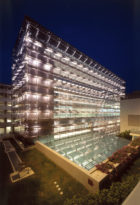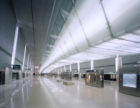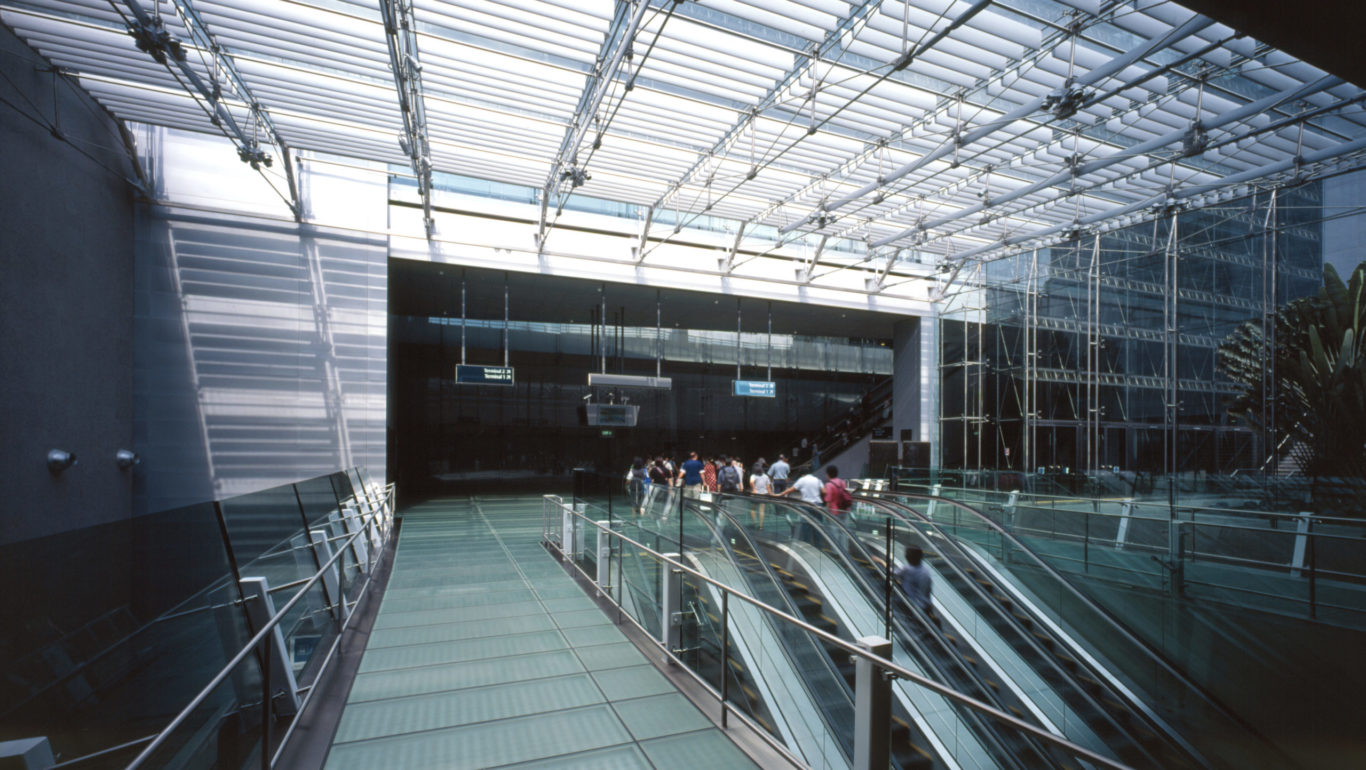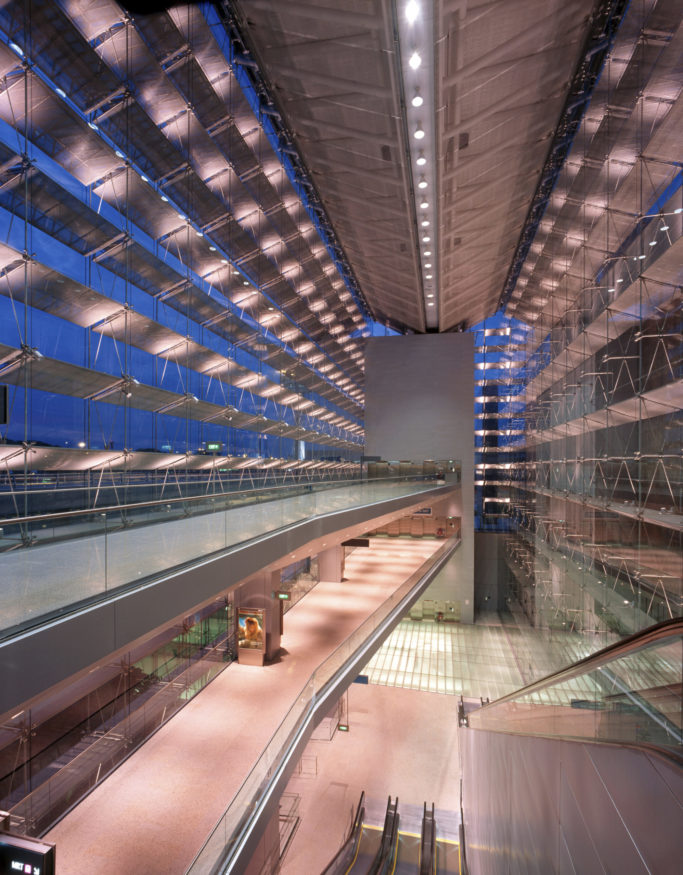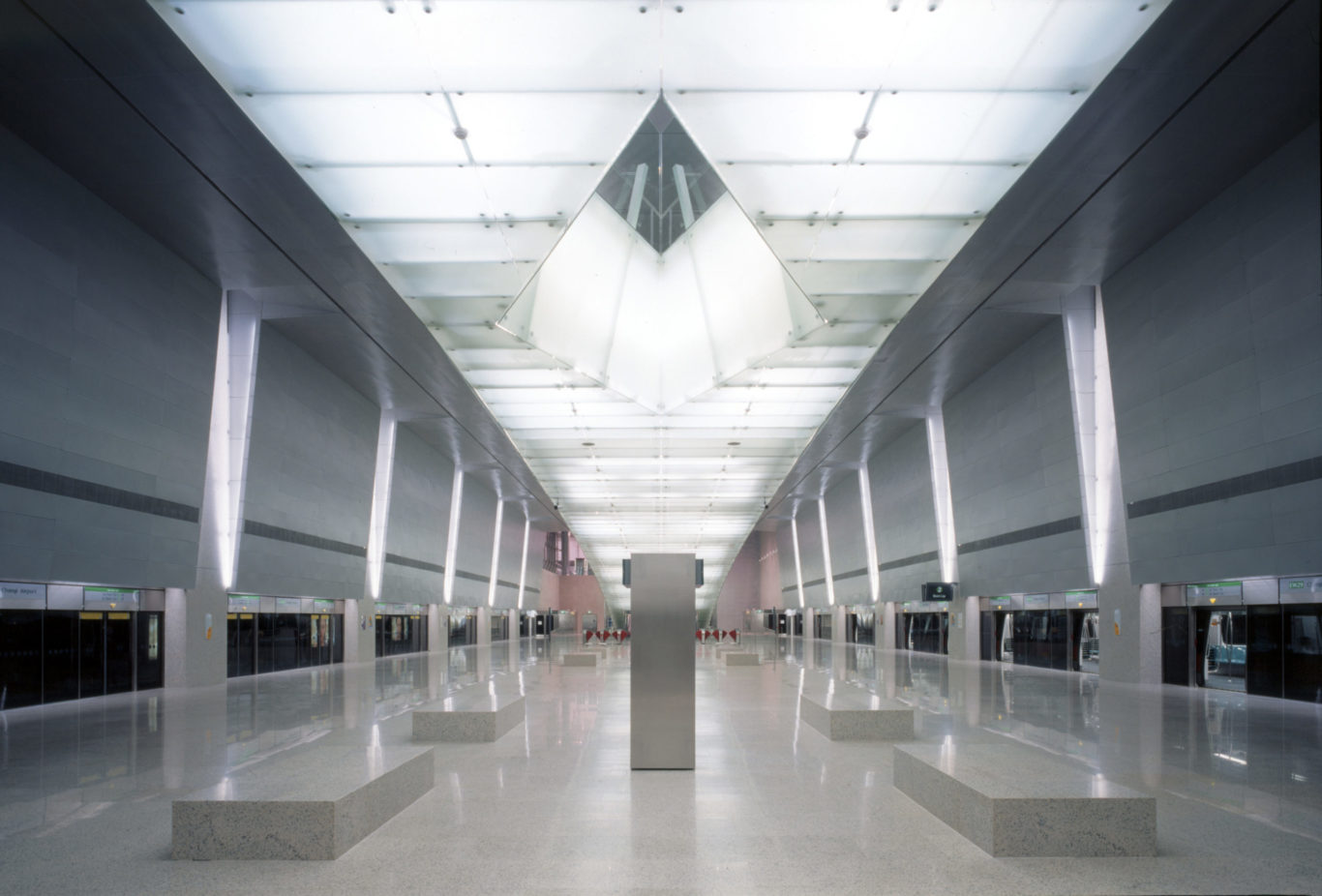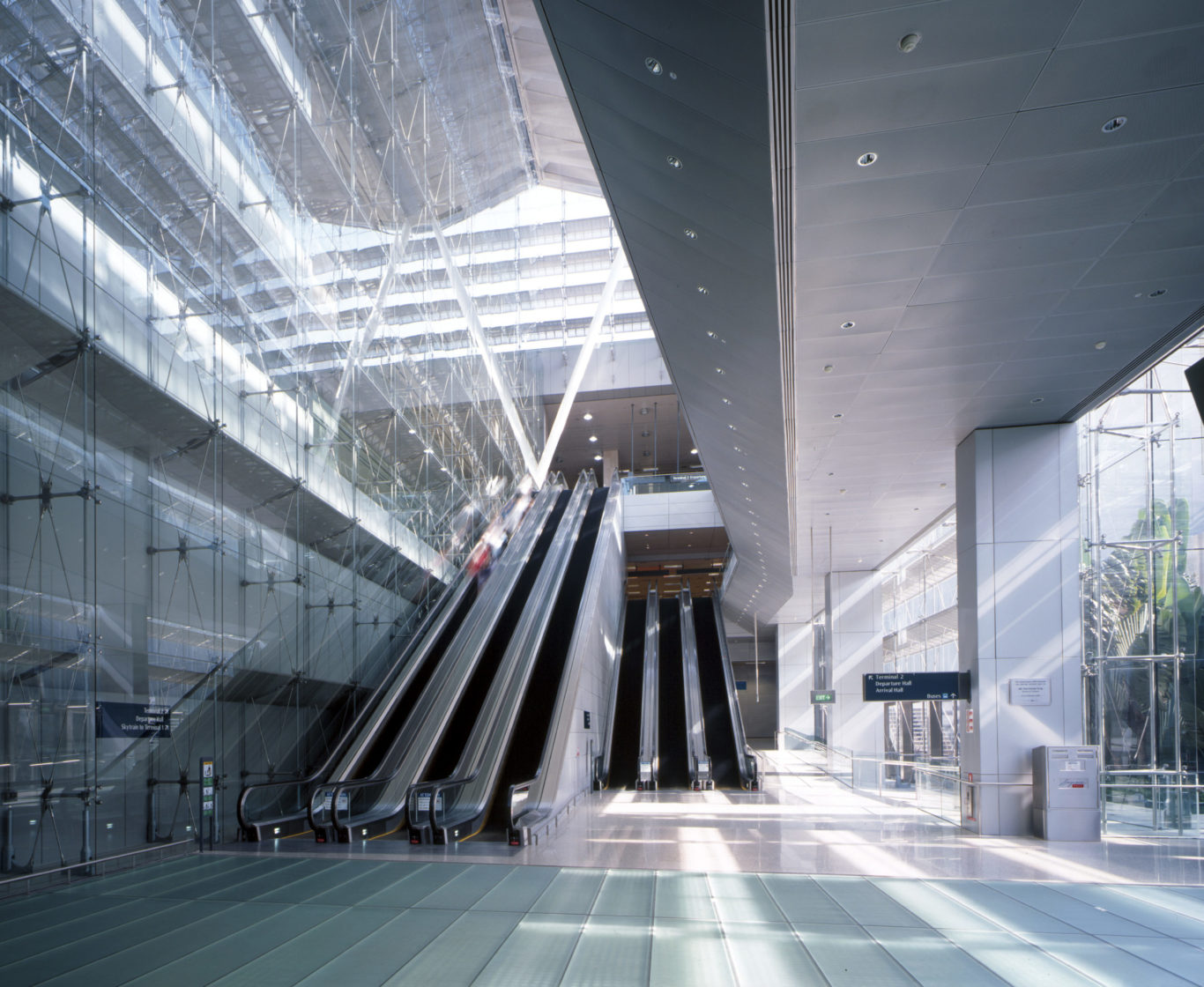Connecting to the city, and the world
Changi International Airport is a key transportation hub in Southeast Asia and one of the busiest passenger and cargo airports in the world. With Singapore’s emergence as a key global transportation hub, city and airport officials recognized the need for a new intermodal transit link to the airport in the 1990s. Since the airport opened in 1981, it had relied only on taxi and bus connections. The Changi Airport Rail Terminal, which was completed in 2001, connects passengers to an extended subway line and provides an underground pedestrian concourse that links two of the airport’s three terminals.


